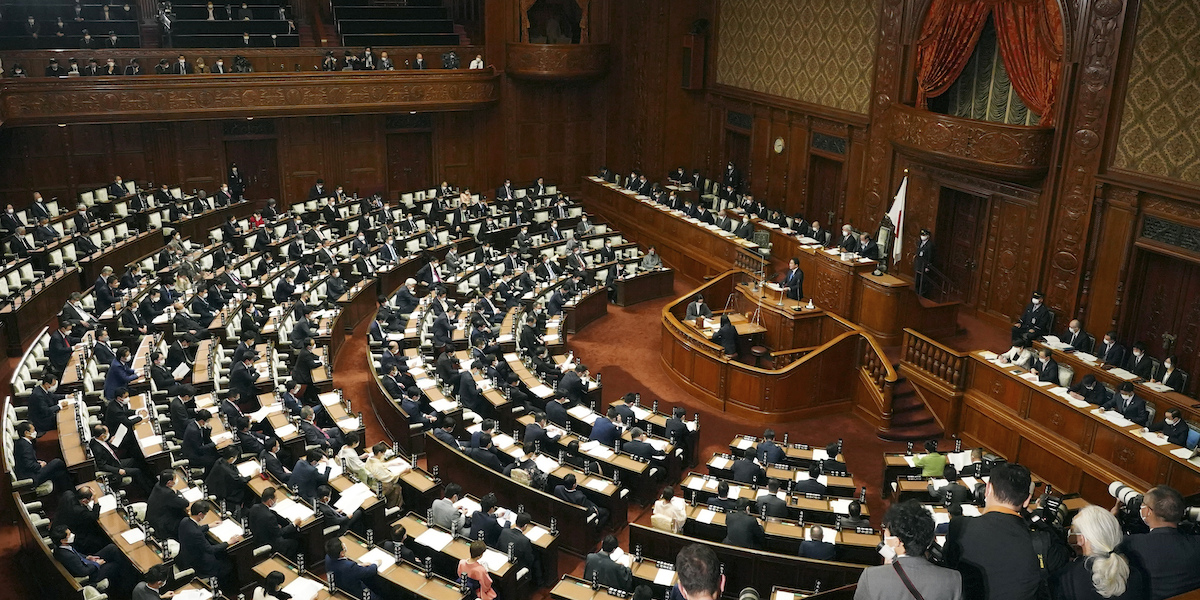The Japanese parliament has made public an expected relationship which documents the extensive campaign of forced sterilization carried out between 1948 and 1996 on nearly 25,000 people believed to be suffering from an illness or intellectual disability. The sterilizations were implemented on the basis of a law called the “eugenic protection law”. The report adds new data and details on an issue already known and which had been much discussed in the past, especially following lawsuits filed against the government. The new information also allows for a clearer idea of the consequences of forced sterilizations.
According to the report, nearly 25,000 people were sterilized in Japan between 1948 and 1996 (24.993), 16,500 of which without their consent. Some organizations of Japanese activists and activists have also expressed strong doubts about the degree of freedom that the people who agreed to undergo the operations had, around 8,500.
The cases documented by the report are different. In some situations people were not properly informed about the type of treatment they would receive. At least one person was told she would be operated on for appendicitis, and at least one other had a hysterectomy, the removal of the uterus, by doctors who told her the operation was to keep her from feeling sick during her period. Most of the sterilizations were carried out on women, but there were also some children, including two of 9 years. The report also shows that in many cases sterilization was considered a requirement in order to access certain medical facilities.
However, there are some things that the report does not explain, which is why some human rights activists said they were dissatisfied with its content. “The report does not explain why that law was created and why it took 48 years to revoke it,” said Koji Niisato, a lawyer who represents many of the people who have undergone forced sterilizations over the years. Niisato called the newly released report “a compilation of what has already been investigated and documented.”
The report, 1400 pages long, has been drafted by a group of parliamentarians on the basis of a law passed in 2019 by the Diet, Japan’s bicameral parliament, which provided for both compensation for people who had undergone sterilization and a more in-depth investigation into how it had taken place and its consequences.
– Read also: In Japan we are finally talking about forcibly sterilized people
The forced sterilization law was introduced by the Socialist Party, with the idea of preventing the births of people possibly suffering from intellectual disabilities or other types of diseases, which the government considered “inferior”. It wasn’t the first of this type in Japan, and had enormous consequences on the lives of the people involved: many of them wanted to have children and were unable to have them, others suffered years of pain related to operations, still others never married because the people with whom they started relationships they didn’t want to bond with those who couldn’t have children.
Presenting the report, the Japanese Chief of Staff Hirokazu Matsuno he said that the government “profoundly apologizes” for the suffering inflicted on the many people involved.
Six lawsuits have been filed against the government over forced sterilizations in Japan so far. In two of the judges agreed with the government, arguing that any crime had now expired, ie that too much time had passed since those events to be able to issue a sentence. In the other four cases, the judges agreed with those who had brought the lawsuit, holding that the law on eugenics had violated the principles of equality contained in the Constitution and that the application of the prescription would also have violated them.
According to the 2019 law for which the report was drawn up, every person who has undergone forced sterilizations can claim compensation of 3.2 million yen, the equivalent of about 20 thousand euros. However, there is a deadline within which to request compensation, scheduled for April 2024: of the almost 25,000 people involved, so far just over a thousand have asked for it. For this activists and lawyers they ask that the deadline be removed, so that everyone has more time to claim the compensation they are entitled to.
Japan was not the only place in the world where forced sterilization campaigns were implemented against disabled people: in the past it also happened in United States and in Sweden. In some countries it continues to happen, especially with women. According to a relationship published last September by the European Disability Forum, the largest organization representing people with disabilities in Europe, at least 14 countries still allow forced sterilization: Austria, Bulgaria, Croatia, Cyprus, Denmark, Estonia, Finland, Latvia, Lithuania, Malta, Portugal, the Czech Republic, Slovakia and Hungary.
– Read also: Women with disabilities forcibly sterilized
